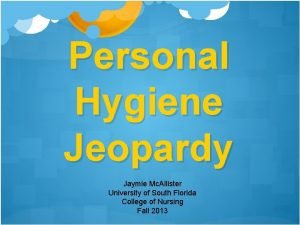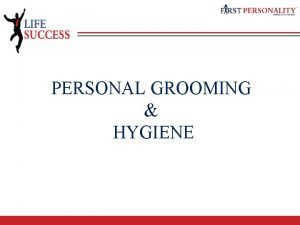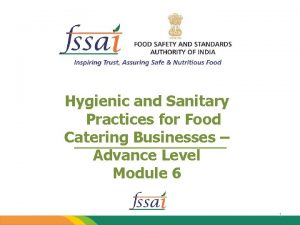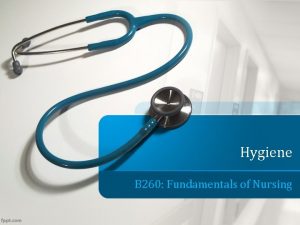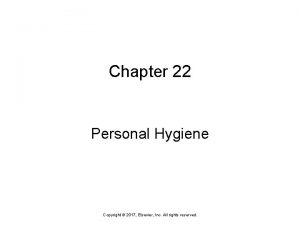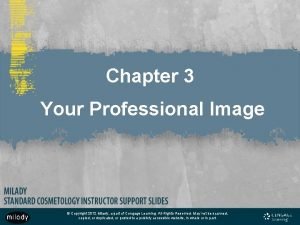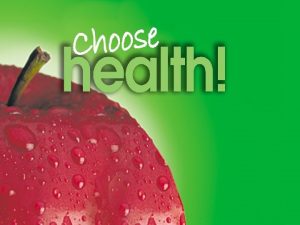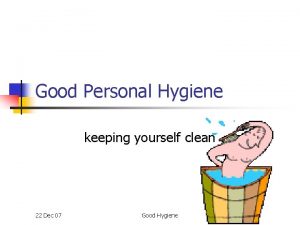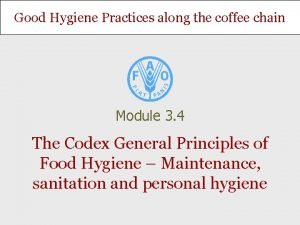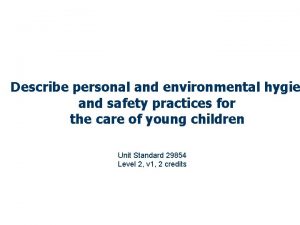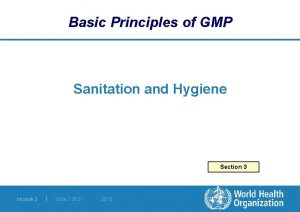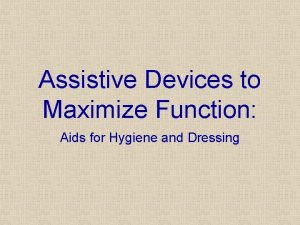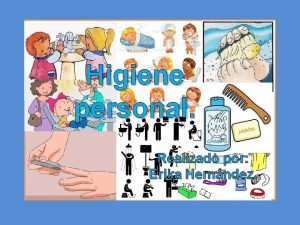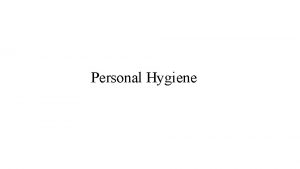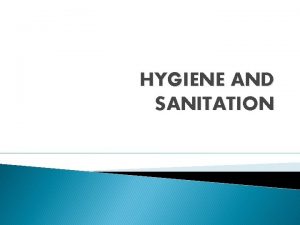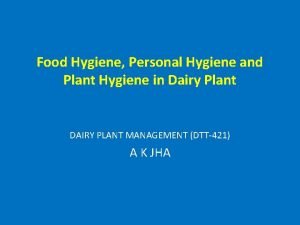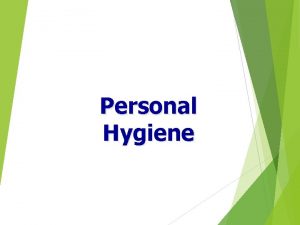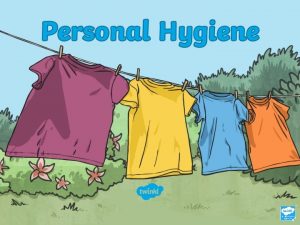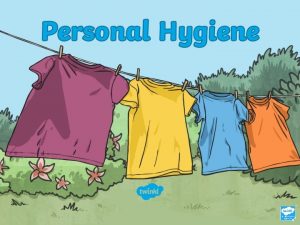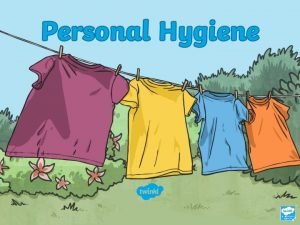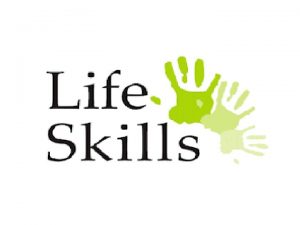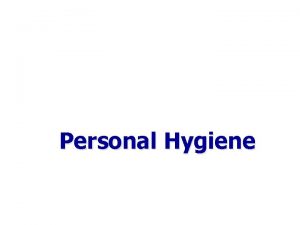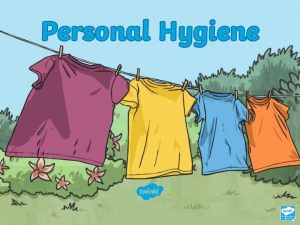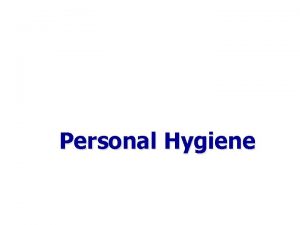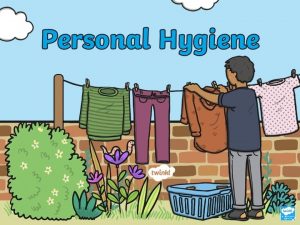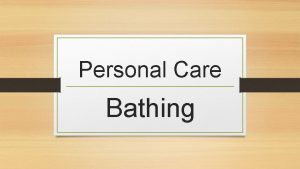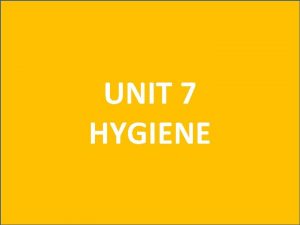poor hygiene Lesson 1 a Personal Hygiene poor



















- Slides: 19

poor hygiene Lesson 1 a: Personal Hygiene

poor hygiene Before we start today’s lesson, wash your hands … 2 minutes Click to start

poor hygiene To show progress today I should … Be able to explain why Be able to suggest ways Be able to evaluate the good personal hygiene to keep myself and the consequences of poor and general cleanliness is kitchen area hygienic. personal hygiene (linked important in the kitchen. Hygiene: acts of cleanliness that are necessary for health Lesson Plan to bacterial growth). Consequences: something that might happen, good or bad

poor hygiene Hand Washing Contamination: Hand washing is one of the most important actions you can take to help prevent contamination. Task: After watching the video, list the main steps to washing your hands properly. making something harmful or unsuitable by contact with something unclean.

poor hygiene How to wash your hands properly 1. In a hand sink just for hand washing 2. Use comfortably hot water 3. Rub vigorously for 15 to 20 seconds with antibacterial soap 4. Don’t forget: between fingers, wrists, fingertips and thumbs! 5. Rinse hands before drying with disposable towel (not a tea towel)!

poor hygiene Now show your teacher how you wash your hands. Check the diagram, make sure you clean the most frequently missed areas. Bacteria: microscopic living organisms that can be harmful to health 2 minutes Click to start

poor hygiene When to wash your hands Before: • Starting work • Handling high risk and ready-to-eat foods Between: • Preparing raw and high risk foods After: • Preparing raw food • Going to the toilet • Coughing, sneezing or blowing your nose • Cleaning • Touching rubbish • A break • Touching your face or hair

poor hygiene Human sources of contamination: • Hair • Ear, nose and throat • Skin and hands • Gut • Clothing • Wounds • Jewellery Bacteria: microscopic living organisms that can be harmful to health

poor hygiene Why is personal hygiene important? Personal Hygiene: care for one's bodily health and well being, through cleanliness • Food handlers touch and handle foods many times a day most • People are sources of contamination • Infected handlers are dangerous • Customers like to see hygienic staff

poor hygiene Clothing Standards: a level or measure of quality • Protective clothing – clean, washable • Headwear – hats, hairnets • Jewellery – must be removed • Footwear – covers the whole foot and washable/wipeable

poor hygiene Personal Habits Do: Don’t: • Wash hands regularly • Cough or sneeze • Keep nails short and clean • Bite nails or lick fingers • Cover cuts with a blue dressing • Scratch anywhere on your body! • Report illnesses • Eat in a food area • Smoke • Wear watches and jewellery or strong perfume/aftershave

poor hygiene There is still a potential for food handlers to contaminate foods even with good personal hygiene because of: Cuts: use blue plasters with an aluminium strip. This makes them visually obvious (as blue is not a naturally occurring food colour) and the aluminium strip can be detected with a metal detector if it fell into food.

poor hygiene There is still a potential for food handlers to contaminate foods even with good personal hygiene because of: Illness: food handlers should not work if they are suffering from illness as they can spread germs to both fellow employees and customers.

poor hygiene Reporting illnesses If food handlers had the following symptoms they would have to call If you don’t call in sick: you may spread a • Diarrhoea bacteria known as ‘staphylococcus • Vomiting aureus’! • Feeling sick • Colds and flu • Ear, eye and nose discharges • Boils and septic wounds that leave broken skin

poor hygiene Staphylococcus Aureus - the ‘staff virus’ Sources: human nose, mouth, skin, boils and Cuts. Coughing and sneezing. Onset period: Usually 1 to 7 hours (usually 2 -4) Typical symptoms: Abdominal pain, mainly vomiting, some diarrhoea, vomiting and low temperature. Duration of illness: 6 to 24 days

poor hygiene Common symptoms you have a food-borne illness are: • Vomiting • Diarrhoea • Nausea • Abdominal and stomach pains • Fever/high temperature

poor hygiene Personal Hygiene Summary You must maintain the highest possible standards of personal hygiene to avoid contaminating food. • Food handlers should wear appropriate overclothing whenever they work with food • Hygienic food handling is essential • Hand hygiene is the most effective personal hygiene control • All illnesses with the risk of infection must be reported • Wounds must be treated promptly and covered fully

poor hygiene Task: Try and use each of the key words in a sentence. 1. Personal hygiene 2. Standards 3. Habits 4. Bacteria 5. Contamination 6. Consequences 7. Staphylococcus Aureus E. g. High standards of personal hygiene can prevent bacteria spreading.

poor hygiene Create a hand washing poster for your food technology room. You must include at least 5 steps to washing your hands properly. To really show you know you could also include: • The consequences of not washing your hands properly • Information about staphylococcus aureus Deadline: Your homework is due in:
 Hygiene jeopardy
Hygiene jeopardy Essay about health
Essay about health Personal hygiene in catering
Personal hygiene in catering How to wash a bedridden patients hair
How to wash a bedridden patients hair Chapter 22 personal hygiene
Chapter 22 personal hygiene Personal hygiene and grooming
Personal hygiene and grooming Personal hygiene definition
Personal hygiene definition Personal hygiene in physical education
Personal hygiene in physical education Chapter 3 your professional image milady
Chapter 3 your professional image milady Personal hygiene
Personal hygiene Personal hygiene puberty
Personal hygiene puberty Importance of personal hygiene
Importance of personal hygiene Specific objectives of personal hygiene
Specific objectives of personal hygiene What is personal and environmental hygiene
What is personal and environmental hygiene Basic principles of personal hygiene
Basic principles of personal hygiene Personal hygiene assistive devices
Personal hygiene assistive devices Verbos en formas no personales
Verbos en formas no personales Adivinanzas de higiene
Adivinanzas de higiene Mga dapat na isaalang alang sa pansariling pagtataya
Mga dapat na isaalang alang sa pansariling pagtataya Personal finance unit 1 lesson 5
Personal finance unit 1 lesson 5
